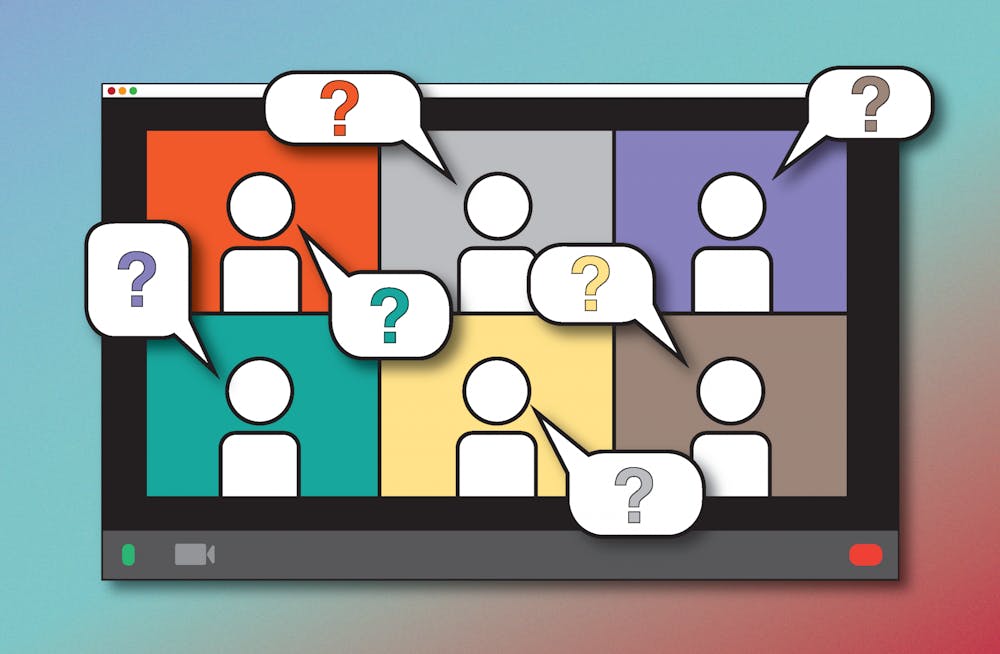Zoom has been a major resource and tool that professors utilize for classes and to connect with students. But one factor within the video conferencing platform has altered the way Miami professors look at teaching — students’ cameras.
More specifically, the choice students make to keep their camera on or turn it off during class.
During a class conducted over Zoom, students are able to turn their device's camera on and off. Once off, the student and their surroundings will remain hidden, only prompting a black screen with their name or a picture until the student turns the camera function back on.
This feature has caused some difficulties for some professors. Not being able to see some students’ faces while instructing has been an obstacle they are fighting to overcome.
Oana Godeanu-Kenworthy, an associate teaching professor of American studies, doesn’t require students to have their cameras on during class. But, a few weeks ago, she sent out an email to her class strongly urging her students to do so.
“I am not forcing or requiring [students to turn their cameras on] because I realize that everybody's living and broadcasting situation is different,” Godeanu-Kenwoerthy said. “But, at the same time, it is important to be able to pick up on the non-verbal cues that we [professors] rely on when we teach face to face.”
She explained that students turning their cameras on during class helps professors adapt, provide better feedback and help students. If a student is about to say or wants to say something, if a student is nodding yes or no, a student who may be visibly confused on a topic — these are all body language cues she is no longer able to read once a student has their camera off.
Michaela Levendoski, a sophomore psychology major, explained why for almost all of her classes, she chooses not to have her camera active.
“I just don’t really feel like getting ready for class, you know?” she said.
Levendoski described how she doesn’t like being able to see herself while in class. She said it’s a major distraction, and she gets too focused on what she looks like, so it’s just easier to be able to lay in bed and keep the camera off to get the most out of her remote learning experience.
But she said there was one instance where she felt compelled to ignore her usual self protocol and turn her camera on.
“It was in one of my classes, there were like maybe seven people in the Zoom, and everyone had their cameras off while presenting their projects,” Levendoski said. “I felt really bad for my teacher because it felt so awkward, so when it was my turn to present, I turned my camera on to try to make it a little more comfortable for her.”
Enjoy what you're reading?
Signup for our newsletter
After her presentation, Levendoski said she did notice her professor’s mood change in a positive way. She said she’s glad that she turned it on for that situation but will most likely stick to keeping her camera off for the majority of the time.
It’s uncertain how long Miami and schools across the country will have to continue with remote and hybrid learning. But for the foreseeable future, it seems like the decisions that students make regarding their cameras will be a choice that professors will encounter and work around.
“What I love about my job is the energy that happens in the classroom,” Godeanu-Kenworthy said. “You really can’t even try to replicate that without seeing students’ faces. That’s why turning on cameras means so much.”




